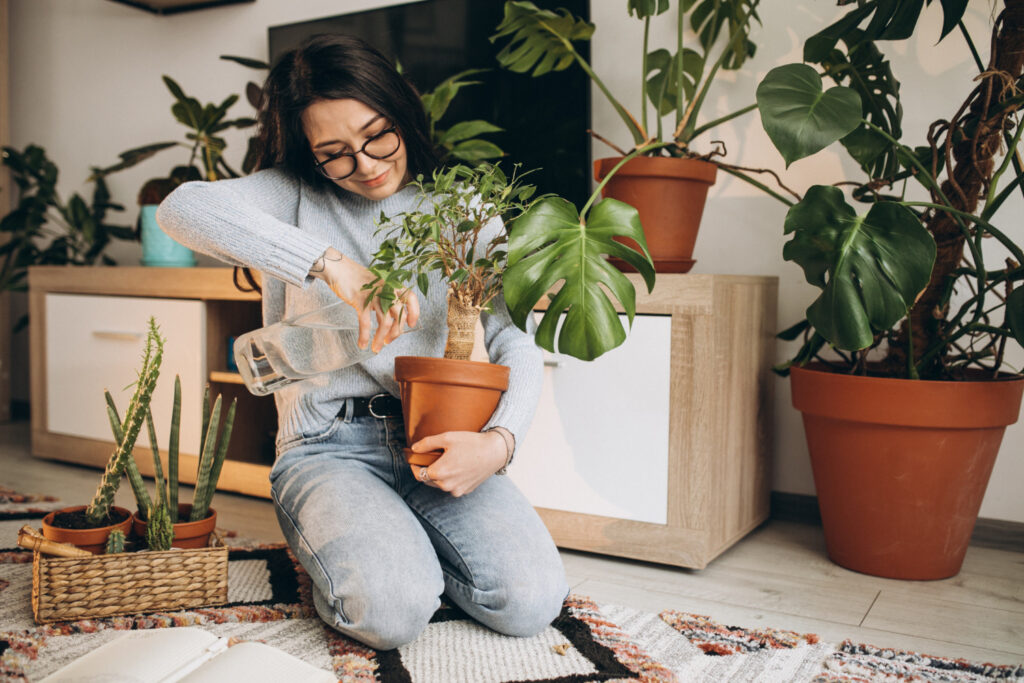Introduction: Harnessing The Potential of Indoor Gardening
The grip of winter begins to be released and the promise of spring is towards us gardeners across the world eagerly anticipate the chance to plant the seeds of new life and development. Beginning seeds indoors is an age-old custom that allows gardeners to gain an early into the growing season and ensure strong and healthy plants that are which are ready for transplanting once the weather begins to warm. In this article, we’ll look at the advantages and disadvantages of planting seeds indoors to prepare to allow for early spring planting and help you get started on your garden and grow an abundant garden of greenery and beauty.

1. Making Seed Selections and Plan Your Garden
Begin by choosing varieties of seeds you would like to plant for your yard. Take into consideration factors like your climate, conditions for growing, and individual preferences when selecting plants. Make a planting schedule that is based on the region’s last frost date, and allow plenty of time to allow seeds to grow as well as plants to mature before transplanting them outdoors. Consider the particular needs of each plant, including temperatures, light, and spacing to ensure successful growth.
2. The selection of containers and soil
Select containers that are safe, clean, and drain well for establishing seeds indoors. There are a variety of options, including seed trays Peat containers, cell packs, or even recycled containers with drainage holes. Make sure to use a top-quality seed starter mix or potting mix that is easy to move around, sterile, and free of weeds and pathogens that cause disease. Fill containers up to 1/8 inch from the surface, then gently create an even surface for planting seeds.
3. Sowing Seeds and providing optimal Conditions
Sow seeds per the spacing and depth of planting guidelines on the seed packets. Use a pencil or dibbler to make furrows for smaller seeds or press the bigger seeds onto the soil’s surface. Cover seeds lightly in a layer of soil, and then water gently to help settle in the dirt around the seeds. Set the containers in a bright, warm area with constant temperatures of 65 to 75degF (18-24degC) to promote the germination process. Additional lighting is sometimes required when natural light is not available with LED or fluorescent grow lights that are placed about between 2-4 inches above the seedlings 12-16 hours each day.
4. Assisting in Maintenance and Care
Watch closely to look for indications of development, and alter the frequency of watering as needed to ensure the soil stays dry but not waterlogged. Make use of a spray bottle or delicate watering can to soak seedlings below, to avoid damaging the delicate roots. Make sure to rotate containers frequently to ensure uniform growth and to prevent seeds from leaning towards a light source. Cut seedlings back as needed to ensure proper spacing and to avoid overcrowding. picking the strongest and most healthy plants to be kept.
5. Hardening Off & Transplanting
As seedlings develop and mature slowly introduce them to outside conditions using the process of hardening off. Begin by putting the seedlings in a protected, shaded area for a couple of hours every day, gradually increasing their exposure to wind and sunlight for about two to three weeks. Plant seedlings in the garden after all risk of frost is gone and the soil temperature has increased enough to allow planting. Take care when handling seedlings making sure not to damage roots and then water them thoroughly after transplanting to aid in the establishment of plants.
6. The Garden is a vital part of your life
Maintain your garden as the plants develop and mature, ensuring enough water, nutrients, and assistance as required. Keep an eye on your plants for signs of insects or diseases, as well as nutrient deficiency, and take swift action to deal with any problems that occur. Enjoy watching your garden grow and grow through the season. You can enjoy all the benefits of your work while you enjoy fresh, freshly grown produce straight in the garden.
Conclusion: Growing a Garden of Possibilities
Planting seeds indoors for early spring planting is an enjoyable and fulfilling experience that lets gardeners actively participate in the growth process from beginning to end. When you choose seeds and plan your garden, choosing containers and soil as well as sowing seeds and ensuring the best conditions, taking the necessary care and maintenance, setting off and transferring and sustaining your garden until it is fully developed You can create an endless garden that nourish your body as well as the mind and soul.
Enjoy your gardening and may your indoor seedlings grow and flourish when you begin the process of creating your garden starting from seeds!
Checkout: Top Free Home Gardening Books